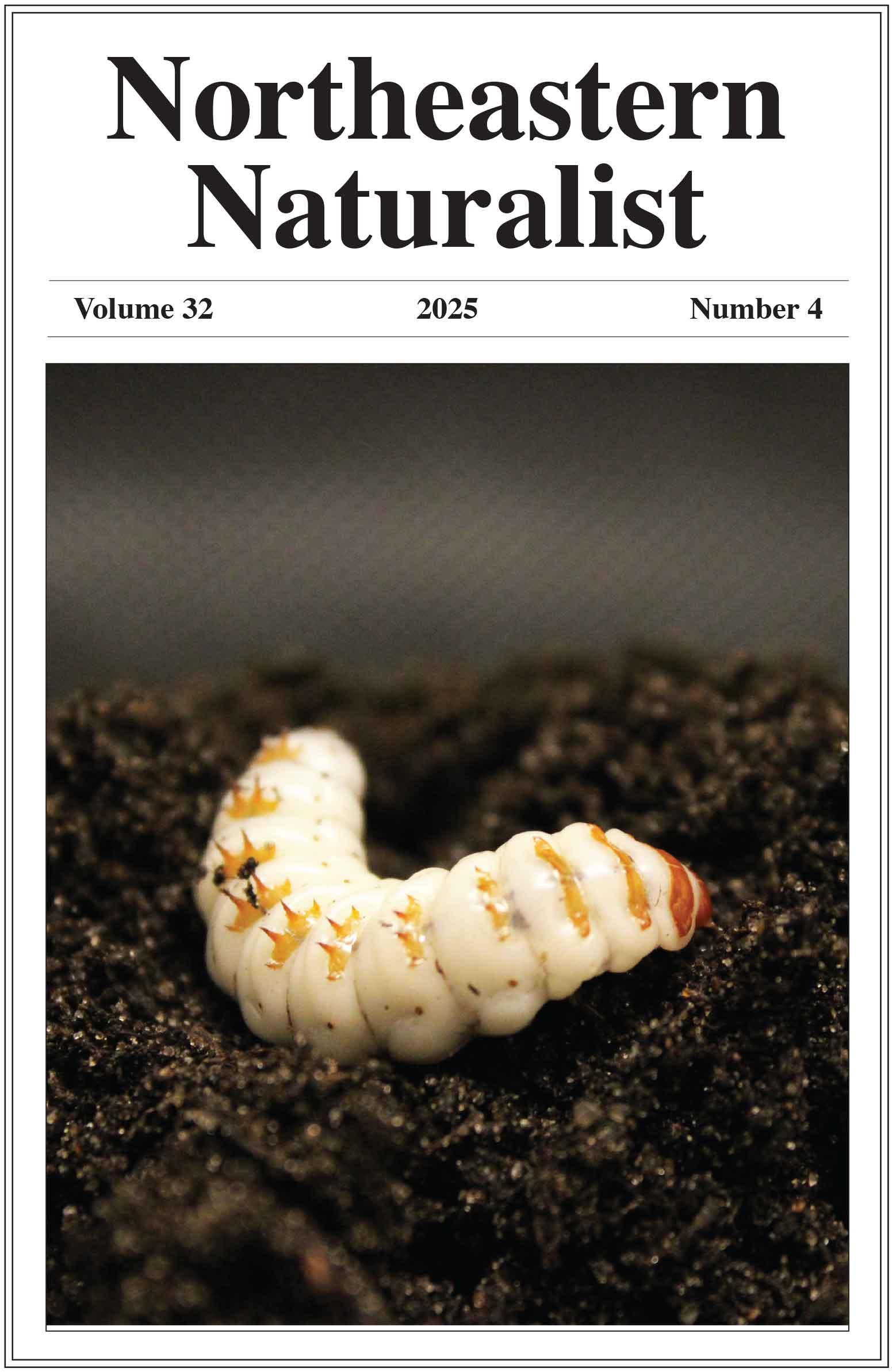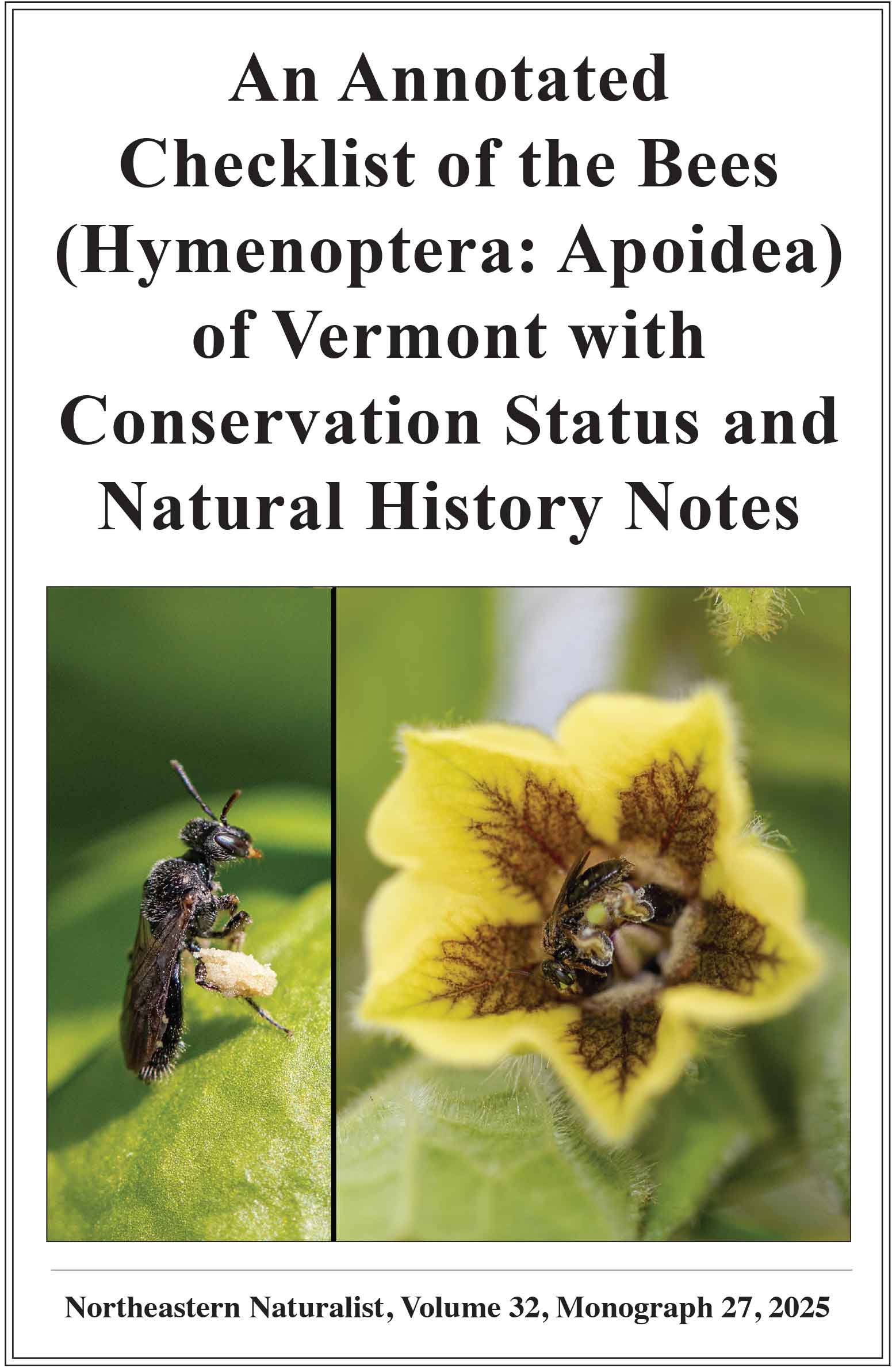Baseline Wood Turtle (Glyptemys insculpta) Population Demography and Abundance Estimates at Long-term Monitoring Sites in West Virginia
Michelle Fonda1, Kevin Oxenrider2,*, and Donald J. Brown3
1West Virginia Division of Natural Resources, 738 Ward Road, Elkins, WV 26241. 2West Virginia Division of Natural Resources, 1 Depot Street, Romney, WV 26757. 3US Forest Service Pacific Northwest Research Station, 42218 NE Yale Bridge Road, Amboy, WA 98601. *Corresponding author.
Northeastern Naturalist, Volume 31, Special Issue 12: G110–G116
First published early online: 31 August 2024
Abstract
West Virginia is located at the southwestern edge of the geographic range of Glyptemys insculpta (Wood Turtle), and there are concerns that warming temperatures with climate change could result in a northward range retraction for the species. Increasing development and conversion of habitat to incompatible land uses may exacerbate this issue. Standardized population monitoring for Wood Turtles in West Virginia began in 2020. We collected population-survey data between the fall of 2020 and fall of 2022 at 5 long-term monitoring sites to estimate population demography and adult abundances. Across the 5 sites, we captured 162 unique individuals, including 48 adult females, 92 adult males, and 22 juveniles. Estimated site-level abundances varied from 72 to 147, but confidence intervals for the estimates were wide. The large number of Wood Turtles documented during surveys and high estimated abundances suggest that populations in West Virginia are currently more robust than many other regions across the species’ distribution. Our results provide baseline estimates for tracking long-term population responses to climate and land-use changes in West Virginia.
![]() Download Full-text pdf (Accessible only to subscribers. To subscribe click here.)
Download Full-text pdf (Accessible only to subscribers. To subscribe click here.)
Access Journal Content
Open access browsing of table of contents and abstract pages. Full text pdfs available for download for subscribers.
Issue-in-Progress: Vol. 33(1) ... early view
Check out NENA's latest monograph and Special Issue:













 The Northeastern Naturalist is a peer-reviewed journal that covers all aspects of natural history within northeastern North America. We welcome research articles, summary review papers, and observational notes.
The Northeastern Naturalist is a peer-reviewed journal that covers all aspects of natural history within northeastern North America. We welcome research articles, summary review papers, and observational notes.